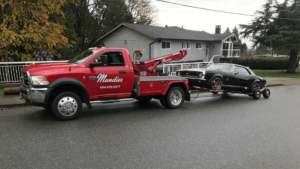An attorney is a legal professional who offers guidance and expertise in specific areas of law. They are often referred to as “lawyers,” but this is a broader term that covers anyone who has graduated from law school with a degree. Click the https://www.bigalbaltimore.com/ to learn more.
They can work in various fields, including large law firms and corporations, small businesses, government agencies, and state or federal judicial systems.

An attorney’s duties and obligations are prescribed by a set of regulations that they take an oath to observe at the beginning of her legal career. These are known as the Rules of Professional Conduct. The rules are partly disciplinary and partly constitutive and descriptive, meaning that they define the lawyer’s professional role. Lawyers have a duty to pursue the highest level of skill, improve the law and the legal profession and exemplify the ideals of public service.
As part of this duty, lawyers are expected to take all reasonable steps to ensure that their clients are represented fairly. This includes advising clients of their rights and the consequences of their choices, describing realistic alternatives to litigation, explaining complex issues in a way that is easy for a lay person to understand, encouraging self-determination and respecting a client’s right to privacy.
It is also a lawyer’s responsibility to keep the client informed as the case proceeds. This includes informing the client of the status of the case, the fees charged and the time estimated to complete the matter. The client must also give the attorney all the information necessary to enable the lawyer to make effective decisions regarding the case, including documents and testimony, and cooperate with the investigation of the facts and the preparation of the case.
The lawyer has a duty to zealously advocate the interests of the client and to render candid advice. This requires the attorney to avoid conflicts of interest, such as accepting a brief from someone who is opposing counsel in another case. A lawyer must also be prepared to explain a case in terms that a jury will understand.
If the client has given the attorney authority to manage a financial account, the attorney must be responsible for the management of funds and property in that possession. It is the attorney’s duty to honor financial commitments made to the client unless prohibited by law.
A lawyer must promptly notify the court and other parties to a lawsuit of any change in her or his address, phone number, email address or other contact information. This helps the attorneys and other participants in a lawsuit to stay in touch and ensures that all court filings reach the correct parties.
Education and Training Requirements
The path to becoming an attorney is rigorous and not something to be taken lightly. Prospective lawyers must earn a four-year undergraduate degree and a Juris Doctor (J.D) degree, usually in addition to extensive preparation and training through law school, including participating in clinics or internships. In many jurisdictions, candidates must also pass a character and fitness examination before being granted a license to practice. This is a thorough background check that makes sure prospective attorneys are upstanding members of the community who can be trusted with important legal matters.
Aside from formal education, lawyer training often includes informal mentoring relationships with more experienced attorneys or judges and hands-on courtroom experience. These experiences help develop critical thinking skills and the ability to write clear and concise legal documents. Additionally, some universities offer minors in areas that are beneficial to the practice of law. For example, a minor in business administration equips future attorneys with an understanding of the economic factors involved in legal cases and can help them make more informed decisions about their clients’ best interests. Similarly, a minor in psychology offers insights into human behavior and mental processes that can assist in understanding their clients, witnesses, and even jurors during legal proceedings.
Once an attorney is licensed, they must participate in continuing legal education (CLE) courses to maintain their licensure and stay up-to-date on changing laws and regulations in their practice area. These training opportunities also allow them to network with fellow attorneys and build relationships that can benefit their career.
Transitional CLE credits are available for newly admitted attorneys, which can be completed in traditional live classroom or fully interactive videoconference settings where questions are permitted. Other formats (on-demand audio/video, web conference) are not acceptable for this credit type. Please see the CLE course listing for more information on these requirements. To earn the Skills CLE credit, you must have actively participated in the program and answered any question posed by faculty or other participants. If you have any questions, please contact the sponsoring CLE provider. The sponsoring CLE organization will be able to tell you whether or not the class you are taking is a Skills CLE credit.
Character and Fitness Examination
Many states require that aspiring attorneys pass a character and fitness examination. This process digs into the legal history of prospective lawyers, including past encounters with law enforcement and mental health issues. It has become controversial in some jurisdictions, and New York is among those pushing to abolish it entirely. NPR’s Jasmine Garsia reports.
Most, if not all, law school applications ask a series of questions under the general heading of “character and fitness.” The schools’ main purpose in asking these questions is to make sure that students have not done something that might affect their ability to perform the duties of an attorney, such as fraud or illegal activity. But the question are also used to evaluate a potential student’s personal characteristics, such as honesty and reliability.
For these reasons, applicants should be as honest as possible in responding to the character and fitness questions. Some prospective attorneys may be told by parents, academic advisors or even legal counsel that they don’t need to disclose certain kinds of events, but this is almost always incorrect. If a person omits information inadvertently, he or she may be subjected to further investigation by the character and fitness board and could ultimately be barred from practicing law.
Character and fitness boards typically review all information contained in an application before making a decision on the applicant’s suitability for the legal profession. Generally, the board determines whether any matter of past misconduct is relevant to an applicant’s present fitness, evaluates whether sufficient rehabilitation has been established to establish present fitness and determines if the applicant should be required to take a bar exam on a conditional basis.
Applicants should familiarize themselves with both the national Council of Bar Examiners’ character and fitness information as well as their particular jurisdiction’s procedures for admission to the bar. For example, the New York State bar examination requires a full character and fitness evaluation that includes current and historical education, employment, residential and financial information as well as criminal and school discipline history. It’s also important to submit all required information in a timely manner, as deadlines are often short.
Licensing
Once an attorney successfully completes law school and passes the bar exam, they become licensed by the state to practice law. A lawyer’s license to practice is more than just a piece of paper; it is the identifier that allows him or her to represent clients in court and in any other legal capacity. As a result, licensure is a very serious matter. Because a competent lawyer can make or break a client’s case, it is important that the state has in place strict measures to ensure that the competency of attorneys meets its high standards. These include graduation from an accredited law school and passing multi-state and state bar examinations.
After graduating from law school, a prospective attorney is usually required to undertake an 18-month apprenticeship with a First Degree attorney (Judge) or another senior lawyer. During this time, they are allowed to have limited practice, and are expected to attend the designated courts for their assigned weeks, write case summaries and complete a logbook that demonstrates their weekly attendance and work. In addition to these requirements, the trainee must also complete written research and submit it for pre-approval by their supervisor.
To obtain a licence to practise, the trainee must also pass a statutory character and fitness examination. The examination usually includes an interview and a background check conducted by the person responsible for licensing. Upon passing the examination, the candidate is allowed to apply to the Chief Justice for admission to the bar. Depending on the jurisdiction, other conditions may also be required, such as an affidavit by the pupil master attesting to the trainee’s character and a copy of the trainee’s LL.B or other honours law degree.
Most states regulate the practice of law, and an attorney is not permitted to practise in another state unless that other state has a reciprocal agreement with the applicant’s state. Additionally, the attorney must be a member of the local bar association and pay annual fees. Failure to meet these conditions could lead to disciplinary action by the bar, including the suspension or revocation of licensure.



